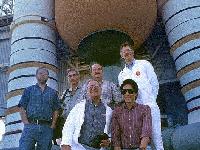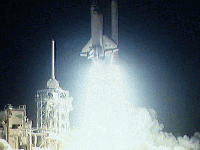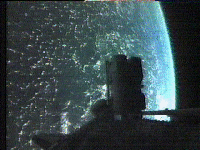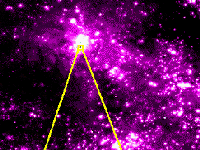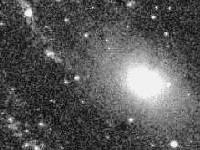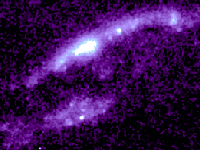THE ASTRO MISSIONS
ULTRAVIOLET IMAGING TELESCOPE
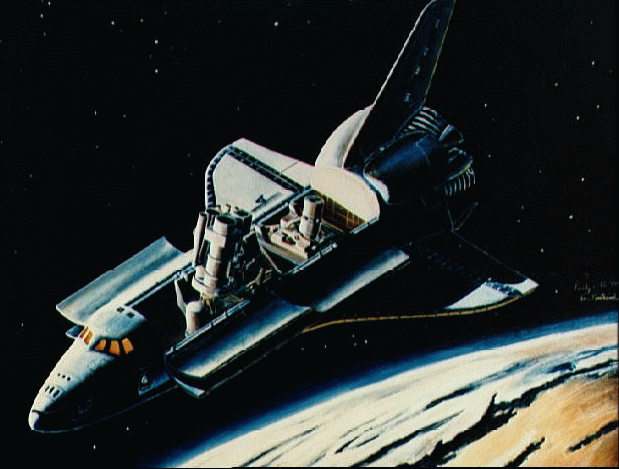
BACKGROUND
The Ultraviolet Imaging Telescope, one of the three ultraviolet telescopes of the Astro Observatory, flew on Space Shuttle missions in December 1990 and March 1995. It was designed, built, and operated by a team led by Theodore P. Stecher at Goddard Space Flight Center. UIT was proposed in 1978 as part of a program to fly small ("university-class") scientific experiments on the "Spacelab" modules attached to the Space Shuttle. At that time, NASA anticipated that there would be about 3 Shuttle/Spacelab missions each year dedicated to astrophysics experiments (out of an envisioned 20 or so missions annually). By late 1985, the Astro UV telescopes had been approved for six missions. At the time of the Challenger accident in January 1986, Astro-1 was in the Shuttle Columbia payload bay ready for the launch to follow the Challenger mission. In the aftermath of the accident and in the face of the rapidly escalating costs of the Shuttle itself, the Spacelab astrophysics program was drastically reduced. Of the 200 experiments proposed in 1978, only the four telescopes of the Astro-1 mission were actually flown. The Astro Observatory was intended to be a UV pathfinder for the Hubble Space Telescope, but rescheduling caused by the accident meant that HST was launched first. UIT was a 38-cm Cassegrain telescope carrying two ultraviolet cameras with 40 arc-minute diameter fields of view (150 times larger than the field of the Hubble Space Telescope). The cameras operated in the "far-UV" (120-200 nm) and "mid-UV" (200-320 nm) spectral ranges, respectively, and carried a total of 12 filters. They employed dual-stage, magnetically focussed image intensifiers with very strong long-wavelength rejection to provide pure UV response. Images produced by phosphors at the output of the intensifiers were recorded on film. (At the time UIT was approved, there were no proven electronic detectors capable of covering the required large, 2048x2048 pixel field of view.) Fine guidance was accomplished with an articulated secondary mirror controlled by a signal from an externally mounted 15-cm star tracker containing a CCD detector. Final resolution for point sources was typically 2.7 arc-seconds FWHM. A cutaway drawing of the UIT design is shown below.
MISSION IMAGES
[Click for Full Size]
SCIENCE IMAGES
[Far-Ultraviolet Unless Noted;
Click for Full Size]
- Astro Missions: Description & Data Archive (STScI Multi-Mission Archive)
- Astro-2: A Shuttle Mission Made in Heaven (Bill Blair, JHU)
- Additional Astro-1
Mission (STS-35) Information and Images (NASA)
- Additional Astro-2 Mission (STS-67) Information and Images (NASA)
- Selected Videos from Astro-2 (QuickTime)
- Astronaut-Narrated
Video Summary of Astro-1 Mission
- Astronaut-Narrated Video Summary of Astro-2 Mission
- Lecture on Ultraviolet Astronomy (UVA ASTR 511, advanced undergraduate/graduate)
- Technical Description of UIT (Astrophysical Journal)
- Technical Description of UIT and UIT Data Reduction (Publications of the Astronomical Society of the Pacific)
- Overview of UIT Science Programs (for Astro-2 Guest Investigator proposals)
- Publications based on UIT data
- HUT home page
- WUPPE home page (U. Wisconsin)
- GALEX Mission (long-duration, wide field, UV imaging satellite mission, launched 2003)
- Astronaut-Narrated Video Summary of Astro-2 Mission
Last modified September 2024 by R. W. O'Connell
Presentation copyright © 2002-2024 Robert W. O'Connell. All rights reserved. Image sources: NASA archives; Ultraviolet Imaging Telescope Team (T. P. Stecher, Goddard Space Flight Center); Hopkins Ultraviolet Telescope Team (A. F. Davidsen, Johns Hopkins University). Launch pad photo of HST/WFC3 Science Oversight Committee copyright © 1999, J. A. Frogel.








